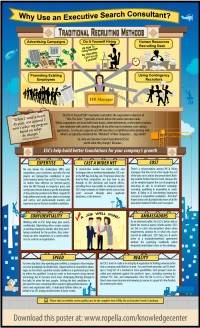 Think for a moment about the finest team you’ve ever been a part of:
Think for a moment about the finest team you’ve ever been a part of:
- One that performed exceptionally well
- One that improved its operations over time
- One whose members came away from the experience professionally fulfilled, wiser, and more skilled
Now think about the so-called “Dream Team”—the 2004 Men’s Olympic Basketball Team. Everyone thought these guys were a shoe-in for gold. The group was packed with NBA stars and coaches, but:
- It failed to achieve its objectives (bringing home a humiliating bronze medal instead)
- Its coaches and members never worked cohesively to improve the team’s performance
- The team came away from the experience more frustrated than fulfilled
Why did your team thrive, and the Olympic team disappoint? Simple: Critical team dynamics. Your team had them, and the “Dream Team” didn’t.
A dynamic team is an effective team. But what makes a group truly dynamic? Whether the team is in the office or on the court, complex factors—ranging from the level of interdependence among members, to contextual conditions in which the team operates—can either enhance or erode team dynamics. Ultimately, all these factors combine to determine the team’s success or failure.
So how do you build and manage a real “Dream Team”—one that is both dynamic and effective? Here are some practical suggestions for you or a team leader who reports to you.

Do You Need a Team?
Teamwork isn’t right for every project. So before you start forming a crew to tackle your latest project, you must first determine if it meets the following criteria:
- The project is clearly defined, and you know how to get the job done.
- The job requires constant collaboration to solve problems and complete work.
- A proven leader is available to spearhead the effort.
If your project does not meet these requirements, another work model (e.g., individuals reporting back to a leader) may prove more efficient for completing it.
Assemble the Members
Once you’re sure the project will best be accomplished with a real team, it’s time to choose the right individuals for the job:
- Designate a leader. Every successful team needs a strong leader at the helm—one who communicates well, has experience handling teamwork issues and understands the project and key roles. If you don’t have the right leader on your staff already, you will need to hire one before the project begins (keep reading for leadership attributes to look for) or take on the leadership role yourself.
- Select the right team members. When drafting a team, you must look beyond job skills. Choose people with diverse skills and personalities: some members should be strong “soldiers”—internal cooperators with great interpersonal skills who get work done; others should be “boundary spanners”—individuals adept at accessing people, resources, and fresh ideas from outside the group.
- Limit group size to 10 or 12. When it comes to teams, smaller is better. Ten is a good number for maintaining high quality communication, clarity of purpose and role, as well as personal investment in the team’s success.
- Focus on critical cooperation—not friendship. Team members don’t have to be best friends to work well together. In fact, creative energy and innovation are often fueled by a modicum of conflict. Just make sure the team leader fosters a culture of respect and open communication, and limits conflict to relevant professional issues.
Ensure Optimum Conditions
No matter how talented individual team members are, you must develop and exploit their synergies to maximize their effectiveness. To help your team succeed, make sure it has the following:
- Authenticity. A bona fide team has clear boundaries, interdependence among members, and at least moderate stability of membership over time.
- A compelling and clear purpose. All your team members should work toward the same higher goal.
- Clearly defined member roles. Each member should understand his responsibilities and respect the rights and roles of his teammates.
- An enabling structure. The team’s tasks, composition and conduct norms must enhance, not impede, work; clear channels of communication must be established; and a supportive social context must exist, where the resources and support necessary to complete collective work are available.
- Consistent reviews and feedback mechanisms. For your team to operate efficiently, you must continually monitor progress to build on what’s working, and fix what’s not.
- Competent coaching. The team leader must be capable and willing to help members get through rough spots, or take advantage of emerging opportunities.
Meet the Team’s Needs
Unless everyone on your team is named Asimo (and just in case you didn’t know, Asimo is Honda’s advanced motion humanoid robot), you must remember that each team member shows up for work each day as a whole person—bringing with him his thoughts, emotions and insecurities. Help keep your team members working well together:
- Appreciate to motivate. Inspire your team members by showing your sincere appreciation for their hard work. Make sure your comments are specific, timely, and public, if possible. Recognize individual as well as team successes.
- Address interpersonal conflicts early and tactfully. Stick with the process until the conflict is resolved.
- Build trust among members with team building activities and events. Give them opportunities for extra social time together in an atmosphere conducive to open communication.

Hire Team Players
Hiring team-oriented people is, obviously, essential to creating a dynamic team. But, figuring out how to identify a team player may not be so obvious. If you need to hire people for your next team initiative, here are some personal qualities to look for:
- Team leaders. A team leader should understand the conditions that influence a team’s effectiveness; enjoy solving problems; possess excellent communication skills; be emotionally mature; and have enough personal courage to move outside his comfort zone for the sake of achieving the team’s objective.
- Team players. A team player should be reliable, a constructive communicator, an active listener, cooperative and flexible.
Beyond these attributes, bear in mind the cultural impact of adding a new element to your current team’s dynamic; e.g., will this recruit contribute to an unhealthy level of competition in your team, or bring people together to solve problems? While none of us has a hiring crystal ball, you can preserve or enhance your thriving team dynamic by hiring people who fit into your corporate culture.



